Good summary. I would add networking (following experts on Twitter or LinkedIn) and practise, practise, practise…:)
How to Get Started with E-Learning
December 1st, 2015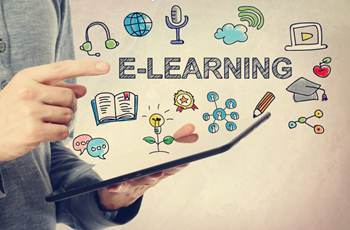
“How do I get started with elearning” is one of the most frequent questions I’m asked. It makes sense since the industry is still hot and growing and every day someone new joins it and needs help.
Most elearning developers I meet are transitioning from face-to-face training and usually start by converting their classroom content into elearning courses. The usual solution is to use software that turns the PowerPoint slides into elearning courses. The challenge is that effective elearning is more than converting existing classroom content.
Get Started by Learning More About E-Learning
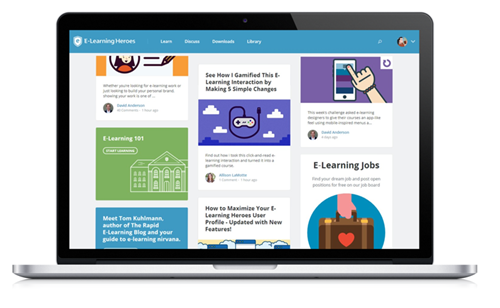
There are all sorts of great resources online to help you learn more about elearning and building good courses. If you can only find one resource, I recommend the E-Learning Heroes because it’s a community of over 250,000 elearning practitioners. Here’s why I like the community:
- Free ebooks that cover everything you need to get started. What’s better than free?
- A structured getting starter series. This helps you get some of the basics.
- Tutorials to help you use the software. The more proficient you are with your elearning software, the better you’ll build your courses.
- Tons of free PowerPoint templates and other downloads. These free downloads will help save time and money. They’re also great to deconstruct to learn more about building courses.
- Hundreds of inspiring elearning examples. What new ideas? Then check out what others build.
- If you have a question, there’s always a quick answer and great discussions. For example, here’s a recent conversation about best practices for updating compliance training.
Get Started with E-Learning Through Practice
Many elearning courses are relatively simple click-and-read courses where it’s click, click, click, and quiz. One reason for this is that elearning developers who are just getting started have limited skills so they tend to build the courses that are easy to build and similar to what they usually see. And since so many courses are linear click-and-read courses, that’s what they build.
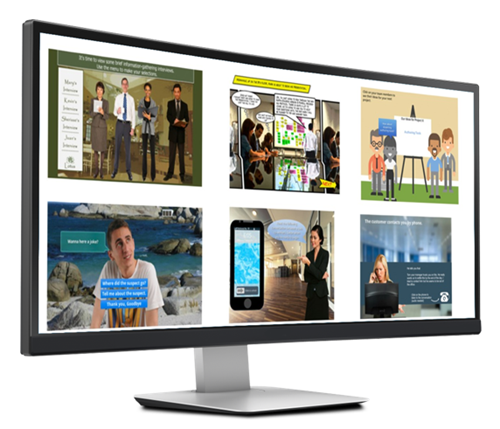
One way to get past that is to learn more about the tools you use. The more proficient you are using your software the more likely you are to go beyond the basics and build engaging and interactive elearning courses.
I prefer Articulate Storyline because it hits a sweet spot between ease of use and capability. You don’t need to know everything about elearning or the software to get started. But as your skills and experience expand, Storyline’s there to grow with you.
Start with the basic tutorials and practice applying what you learn from them. After that, the weekly elearning challenges are a great way to expand your skills. You’re not constrained by the pressures of a real course and can think about something new and stretch your creative juices a bit.
Learn About Learning to Get Started with E-Learning
Stay connected with elearning peeps using social media like Twitter and LinkedIn. I use Hootsuite to manage my social media streams. I focus less on specific people and follow keywords and hashtags. I will admit that sometimes it’s a bit overwhelming, but that’s OK. You don’t need to stay on top of everything. I only check the stream a few times during the week.

Read some books on elearning and course design. There are lots of good elearning and instructional design books, but here are a few of my favorites and why:
- Design for How People Learn. This is a great book about how people learn and will help you design better elearning. It’s also easy to read. I wish some of those instructional design books I read in college were written in the same style.
- E-Learning Fundamentals. Another easy-to-read book that goes through the basics from A to Z. It’s a must-have for the new elearning developer.
- E-Learning and the Science of Instruction. I like this book because it addresses a lot of common design issues. My only caveat is to not become too dogmatic about the points made.
- Instructional Design for E-Learning: What I like about this book is that it has short chapters that cover a broad range of topics. They’re almost like abstracts of a lot of the things you need to know. Good general overviews without going too deep.
- Designing Successful E-Learning and Creating Successful E-Learning are both good books in the elearning library series. They should help most beginners learn more about effective e-learning design.
The links to Amazon books may produce a slight commission.
The books above are good starting points. Once you have a handle on some of the basics, make it a habit to regularly read and apply more advanced topics like gamification and UX design.
It doesn’t really matter how much you read if you don’t apply what you read to your course design. That’s why I like the weekly challenges I mentioned above. They give you a platform to practice what you read in a safe environment. Odds are you won’t get that opportunity when building real courses in real time.
There’s a lot more to building elearning courses, but you have to start somewhere. I suggest catching up on some of the basics mentioned here and then practice, practice, and practice. Your first course may not be the best course, but with each course you’ll get better. And if you need any help, don’t hesitate to ask.
What tips do you have for the person just getting started?
Events
- Everyday. Check out the weekly training webinars to learn more about Rise, Storyline, and instructional design.
Free E-Learning Resources
 |
 |
 |
|
Want to learn more? Check out these articles and free resources in the community. |
Here’s a great job board for e-learning, instructional design, and training jobs |
Participate in the weekly e-learning challenges to sharpen your skills |
 |
 |
 |
|
Get your free PowerPoint templates and free graphics & stock images. |
Lots of cool e-learning examples to check out and find inspiration. |
Getting Started? This e-learning 101 series and the free e-books will help. |
3 responses to “How to Get Started with E-Learning”
SO I guess you could say this is an elearning course on how to get started with elearning… when do I get the elearning course for making an elearning course on how to get started with elearning?
We must go deeper.
Practice, practice, practice. There are many volunteer opportunities available for instructional designers, and these opportunities are a great way to build a portfolio, practice design skills, and do some good for the community.


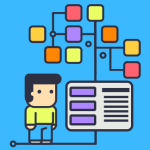

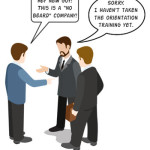
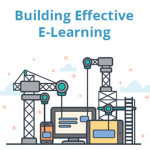
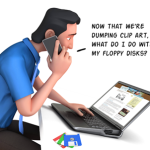
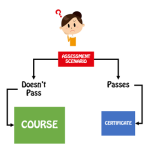



0
comments